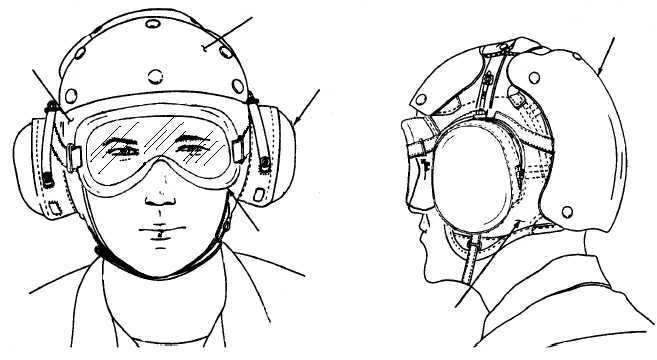petty officer in the crew. He is responsible for the crew
and directs them in the movement of aircraft.
The crew leader acts as the director's assistant, and
is in charge of the crew in the absence of the director.
Crew members are stationed near the wing tips on
the opposite side of the aircraft and act as wing walkers.
One crew member is referred to as the safety man. It is
his/her duty to keep the director informed about the
safety of the aircraft and to prevent accidental damage
and personal injury.
Two of the crew members serve as chockmen. They
tend the chocks, removing them and chocking the
aircraft when the director gives the signal.
When aircraft are moved on the hangar deck,
directors must make sure they do not hit bulkheads,
hangar deck fixtures, support equipment, or other
aircraft. The handling crew safety men are in the best
position to prevent collisions of this sort.
It is the plane director's responsibility to keep the
crew thoroughly informed about safety precautions for
handling aircraft. Each crew member must know
his/her responsibility as an individual and as a member
of the plane-handling crew. A good plane director must
be able to obtain maximum efficiency from his/her
crew.
When aircraft are being moved on the flight deck or
hangar bay by handling crews, verbal orders (with or
without radio headsets), hand signals, and whistles are
used in giving directions. You must remember that the
noise level on an operating carrier during landing and
launching operations is very high. All verbal orders
must be given in a loud and clear manner. Indistinct
directions or orders may lead to costly accidents. When
a high noise level can cause misunderstanding, the
plane director must make sure that directions are
understood by some form of return signal from his
crewmen.
In most cases the aircraft cockpit is manned during
a move. This person acts as a brake rider, and only
qualified personnel are allowed to perform this task.
When moving an aircraft by pushing, handling crews
must know the proper positions for pushing to prevent
damage to the aircraft. Crews must also know the
correct use of handling equipment and the proper use of
aircraft securing equipment.
LAUNCHING PROCEDURE
As soon as the flight requirements for a launch are
known, the aircraft handling officer holds a briefing,
which is attended by key flight deck personnel,
including flight directors, spotters, catapult and
10-3
HELMET
AURAL SOUND
PROTECTOR (TYP)
PROTECTIVE
GOGGLES
CRANIAL
IMPACT
(BACK)
CRANIAL
IMPACT
(FRONT)
CLOTH
LINER
ANf1001
Figure 10-1.—Cranial helmet assembly.

